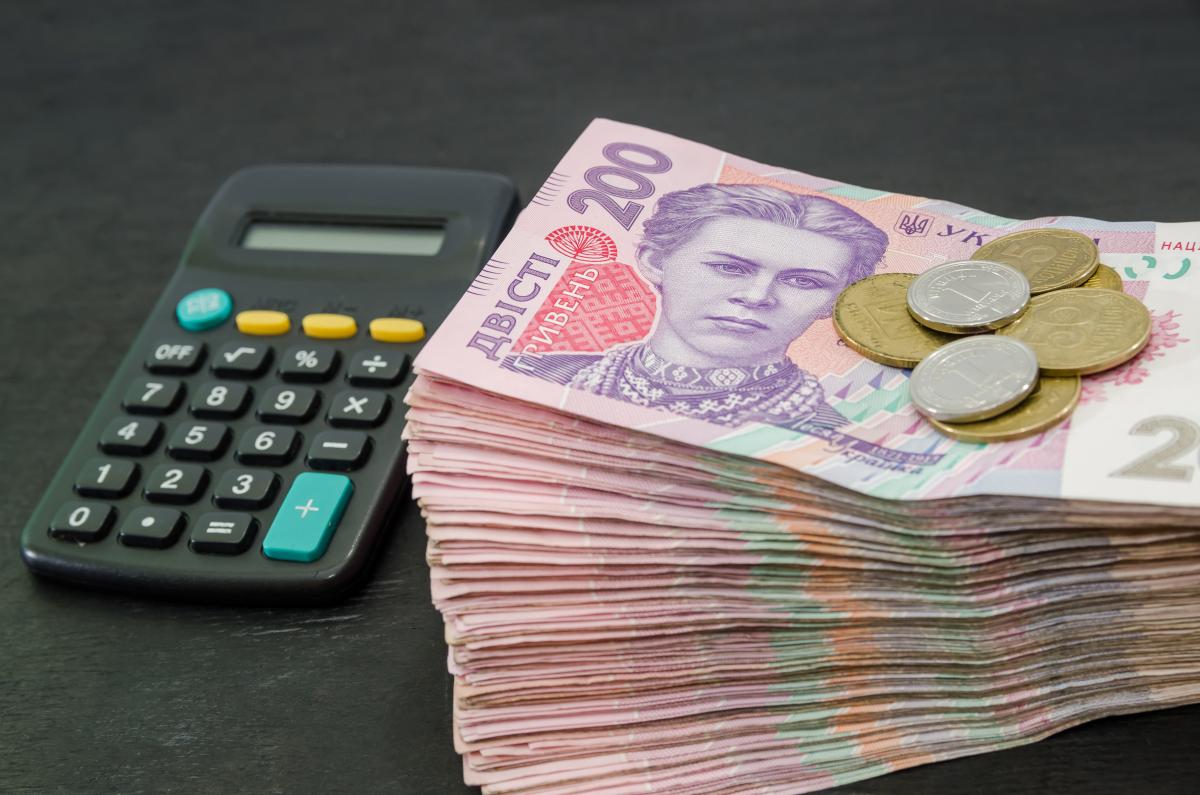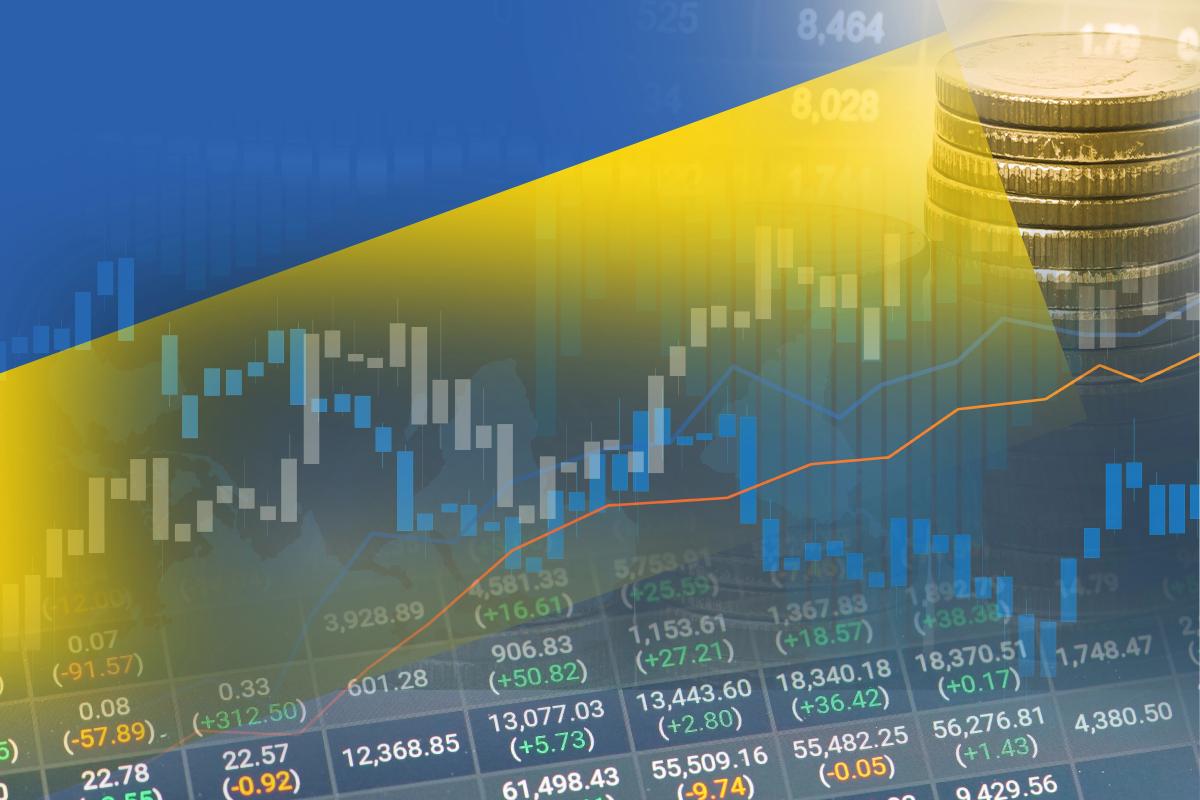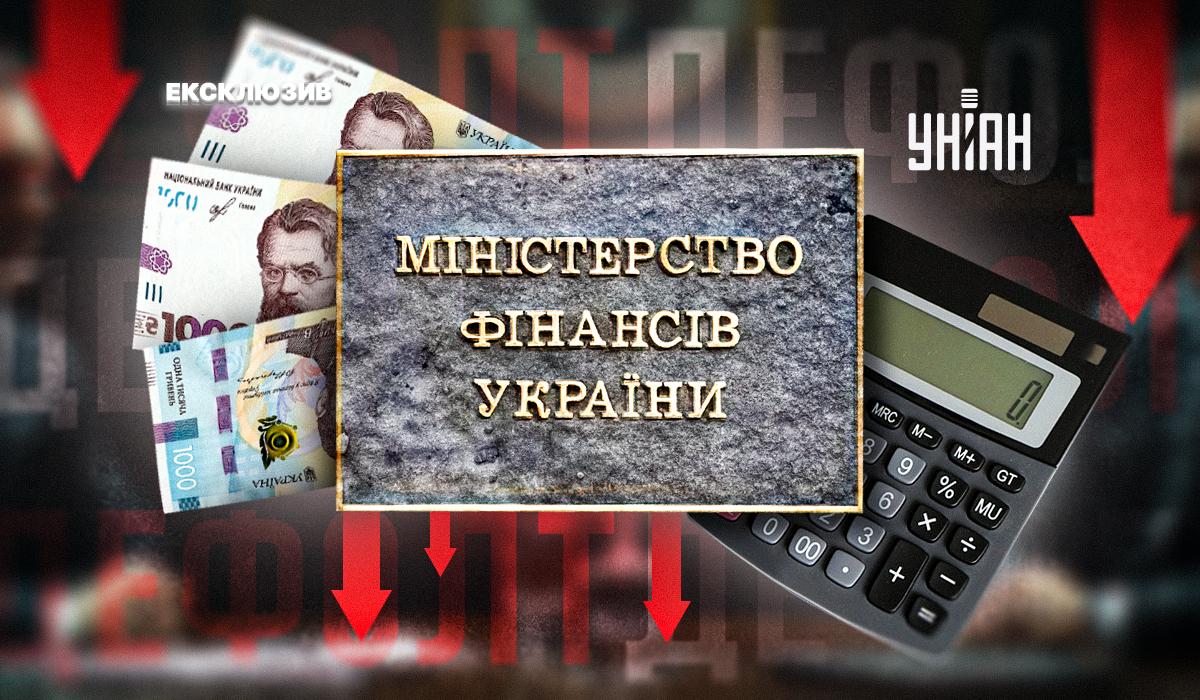“Ukraine was facing the next call – payments for debt in 2015. Western media “scream” about the risks of default. And the government conducts tense negotiations with creditors, on the results of which the future recovery of the economy depends.”, – WRITE: www.unian.ua
Foreign media have recently been stunned by the news about the next risk of default for Ukraine, which caused the avalanche of loud headlines and in domestic publications. In particular, Financial Times wrote that the Government of Ukraine failed to negotiate with investors on the restructuring of the 2015 GDP. In May, Ukraine has to pay $ 600 million on this financial instrument.
The resonance of this news has gained because non -payment of debt in time and in full can lead to a default, which, in turn, threatens significant negative consequences: investors consider such a country unreliable, it becomes more difficult to borrow funds or attract investments in international markets. Of course, this will entail the deterioration of the economic situation within the country: it is the fall of the national currency due to the withdrawal of capital by foreign investors and the rise in prices.
At the same time, most experts and officials do not predict moderately optimistic and catastrophes – because Ukraine already has a successful experience in debt restructuring.
GDP-Warts as a Slow BombWhat are these GDP-values, and where did it all start? These are securities that give investors the right to receive payments in the event of an increase in Ukraine’s economy by more than 3% per year. They were released in 2015, after the beginning of the Russo-Ukrainian War.
At that time, Ukraine was experiencing a large -scale financial crisis because of the war, the loss of territories and the fall of the economy and was not able to settle for external debts. At that time, the government headed by the Prime Minister Yatsenyuk held long restructuring negotiations. In the end, the lenders agreed to write off part of the debt ($ 3.6 billion), and for the rest – extended the maturity.
Instead, they received GDP -Varants (which were also nicknamed by “Jalas Yaresko” – in the name of the then Ministry of Finance, which conducted negotiations from Ukraine). It was a kind of compromise: investors agreed to write off some of the funds, but left themselves a chance to earn more in the future if the Ukrainian economy recovers and grow.
The terms of debt restructuring have been criticized, but the government stated that it seemed to be the only way to avoid default. Thus, for growth of the economy, Ukraine was obliged to pay “tribute”.
In accordance with the agreed conditions, payments for GDP warders were to start from 2021 until 2040, with a two-year Laga (ie in 2021, Ukraine should pay funds to investors for 2019 in case of GDP increased by more than 3 percent). The amount of GDP was to exceed $ 125.4 billion (this figure was reached in 2018).
If the growth of the economy for the respective year was 3 to 4%, Ukraine was to pay 15 percent of the amount of growth of more than 3% of GDP. If the economy increased by more than 4%, another 40% of the increase in more than 4 percent of GDP was added to the specified amount.
For example, if the growth of the economy is estimated at 3.4%, it will be necessary to pay the owners of Varantes 15 percent of 0.4% of GDP (this is exceeding the increase in 3% in this example).
If the year is even more successful and the economy will increase by 4.3%, then it will be necessary to pay 15 percent of 1% of GDP (difference between 3% and 4%), and above – another 40 percent of 0.3% of GDP (4.3% growth minus 4%).
There is another unpleasant condition. By 2025, payments for GDP-warders cannot exceed 1% of GDP, but there are no upper payments, which adds problems to Ukraine when restoring the economy, when a considerable amount of funds will have to pay creditors instead of the state’s priority needs.
 Instead of the priority needs of the state – payments to creditors / photo ua.depositphotos.comIn 2021, Ukraine first made payments for GDP-varieves-then the amount of payments amounted to $ 40.75 million for the economic growth of 2019. The next payment was to take place in 2023, but in the conditions of a full-scale war, Ukraine received a deferral by 2024-then we had to pay $ 200 million for the economic growth of 2021. And now, in May 2025, creditors expect $ 600 million from our country for the economic result of 2023. Fierce negotiations are underway about this amount.
Instead of the priority needs of the state – payments to creditors / photo ua.depositphotos.comIn 2021, Ukraine first made payments for GDP-varieves-then the amount of payments amounted to $ 40.75 million for the economic growth of 2019. The next payment was to take place in 2023, but in the conditions of a full-scale war, Ukraine received a deferral by 2024-then we had to pay $ 200 million for the economic growth of 2021. And now, in May 2025, creditors expect $ 600 million from our country for the economic result of 2023. Fierce negotiations are underway about this amount.
The position of the Ministry of FinanceThe Ministry of Finance emphasized that Ukraine remains tuned to hold constructive negotiations with all GDP-valve owners to find a solution that will ensure long-term debt resilience without creating a threat to restore the country.
According to the Minister of Finance Sergei Marchenko, GDP-Varants were created for economic reality that no longer exists. After all, economic losses as a result of war with the Russian Federation are already estimated at hundreds of billions of euros, and infrastructure across the country has undergone significant destruction.
“Russia is caused by Russia as a result of unjustified and unjustified military aggression against Ukraine is enormous and unprecedented.
He explained that the moderate growth of Ukraine’s GDP in 2023 does not testify to economic prosperity-it is only a fragile recovery after a nearly 30 percent fall in 2022, caused by the full-scale war of the Russian Federation against Ukraine.
 The slight growth of Ukraine’s GDP in 2023 does not indicate economic prosperity / photo ua.depositphotos.com”These tools (UNIAN GDP – UNIAN) should not interfere with our restoration,” Marchenko emphasized.
The slight growth of Ukraine’s GDP in 2023 does not indicate economic prosperity / photo ua.depositphotos.com”These tools (UNIAN GDP – UNIAN) should not interfere with our restoration,” Marchenko emphasized.
According to the Ministry of Finance, at a meeting with investors, Ukraine suggested two options for changing the terms of payments for GDP warders: either to exchange them for additional Eurobonds, released during restructuring in 2024 (this means that no more than 2028 payments will be paid for the economy). Bonds.
“The Special Committee, in turn, suggested that Ukraine pay 75% of payment, Which is in May, the owners of Varantes for GDP growth in 2023 and release new bonds with a rate of 7.75% worth $ 209 million with maturity in February 2029. Ukraine has rejected this proposal, “the ministry reported.
Thus, the parties have not agreed, and the negotiations continue.
That awaits UkraineWhat are the risks for the post-war restoration of Ukraine, and are there any risks of negotiation with creditors?
According to the Economist of the Center for Economic Strategy, Bogdan Slutsky, a full -scale war caused the UNIAN commentary, the full -scale war of Ukraine’s fall by 28.8 percent in 2022, while in 2023 real GDP increased by 5.5%. This indicates only limited recovery from a deep fall: economic activity remained weakened, and the level of real GDP was only 75% of the 2021.
“According to the initial assessment of the State Statistics Service, in 2024 the economy increased by another 2.9%, which allowed to approach 77% of pre -war level. However, even with the further stable increase in real GDP by 4% annually, starting in 2025 – which is an ambitious and difficult year.
According to the economist, under the current conditions, the mechanism of payments for GDP-valves is extremely disadvantageous for Ukraine.
“Further use of primitive formulas will slow down the economic recovery of the country. Therefore, to avoid this, the restructuring of GDP -variations and the revision of their conditions is a logical and correct step,” – says Bogdan Slutsky.
The expert recalled that in 2024 Ukraine successfully restructured Eurobonds worth more than $ 20 billion. And according to international practice, we cannot offer GDP valve owners more favorable conditions than have been provided to bond owners within the framework of preliminary restructuring.
“It is a matter of compliance with the principle of equal attitude to all creditors and supporting the trust of investors in Ukraine,” Slutsky explains.
The economist assures that, despite the complexity of negotiations, there is no reason to panic. Because Ukraine does not have access to the commercial capital markets through the war, and the further support of international partners is not directly attached to the results of the negotiations on the roar.
 Panic Grounds – No / photo ua.depositphotos.com”However, the achievement of the agreement is important for long -term debt and strengthening of investors’ confidence. There is every reason to hope that constructive dialogue will allow you to find a mutually beneficial solution,” the expert concludes.
Panic Grounds – No / photo ua.depositphotos.com”However, the achievement of the agreement is important for long -term debt and strengthening of investors’ confidence. There is every reason to hope that constructive dialogue will allow you to find a mutually beneficial solution,” the expert concludes.
The financial analyst of the ICU investment group Mikhail Demkiv is one of the key problems of release of GDP-values of Ukraine calls the lack of mechanisms in their conditions that would limit the consequences of sharp fluctuations in GDP.
“In my opinion, the Ministry of Finance and Creditors will eventually find a compromise on restructuring conditions. Failure to fulfill debt is an undesirable scenario for both investors and the issuer, since the Ukrainian Ministry of Finance has been working hard for many years to form a reputation of a responsible borrower. In a UNIAN comment.
Demkiv notes that unlike many other cases of restructuring of sovereign debt, Ukraine is forced to conduct these negotiations not through internal economic imbalances or fiscal irresponsibility, but solely as a result of full -scale aggression by Russia.
“I assume that the negotiation process can be delayed for more than a month. However, in the current circumstances of the war, even non -payment of GDP -varieves will not have critical consequences in time. A similar case was already in November, when the government has not made a state guarantee of the company.
Do you wait for a financial disaster in a failureThe People’s Deputy, Chairman of the Financial Committee of the Council Danilo Getmantsev notes that negotiations with GDP-valve holders are ongoing-they are not simple, but there is time to conclude an agreement until May 31.
“I will remind that before the restructuring of the Eurobonds last year there was also a lot of speculation about the default, but in the end we agreed. I hope that the constructive position and the healthy financial sense among the creditors will take the mountain,” the People’s Deputy said.
Getmantsev mentions the situation that took place last summer. Then the negotiations of the Ministry of Finance with the creditors who own part of our Eurobonds worth $ 20 billion failed, and this threatened Ukraine with a default in August. However, then the result was positive for our country – the officials managed to agree on the restructuring of debt, which ensured the budget stability of Ukraine in the conditions of martial law. Therefore, and now experts and officials are confident in a positive solution to the problem.
But what can be a negative scenario if you can not agree? Experts also reassure here. Yes, financial analyst Andriy Shevchyshyn believes that even the failure of negotiations will not affect anything globally.
“We have confirmed agreements with our partners, so there will be no change in the paradigm in the financing of Ukraine. Ukraine has very significant currency restrictions today, cannot attract capital in foreign markets, does not have external revenues from private investors.
Shevchyshyn emphasizes that GDP-variables are not related to other debt-that is, if they do not pay for them, it does not mean default on Eurobonds or other debts. Most likely, such a default will have no serious consequences.
“In my opinion, investors understand the situation in which Ukraine is. Everyone understands that in military state to pay for GDP-varieves after a 30 percent fall in the economy and its restoration simply through a comparison base by 5% is very speculative, because we are very far from recovery.
Shevchyshyn explains that the default procedure provides the following steps: first non -payment, then the occurrence of a technical default, which gives another month for payment, which is an additional month to continue negotiations.
“Well, for the country’s Renom, a default is a bad factor, but it is when you live in a normal world without war and with free movement of capital when you raise money in world markets from private companies. And now Ukraine does not borrow money from private companies, we are financed by international assistance,” he adds.
… To talk about the results of negotiations is early, because the work of the government with creditors is ongoing. Last year, the situation with loud headings about default was already similar, but Ukraine was able to negotiate debt restructuring. And now experts, OP UNIAN ITANA do not predict serious consequences for the economy, but express confidence in the successful completion of the negotiation process.
The main factor that is interfering with the diligent fulfillment of financial obligations to investors is a full -scale war that lasts more than three years. And whether a compromise will be able to find a compromise depends not only on short -term financial stability, but also the ability of the state to invest in the future in the future.
Catherine Frequently
